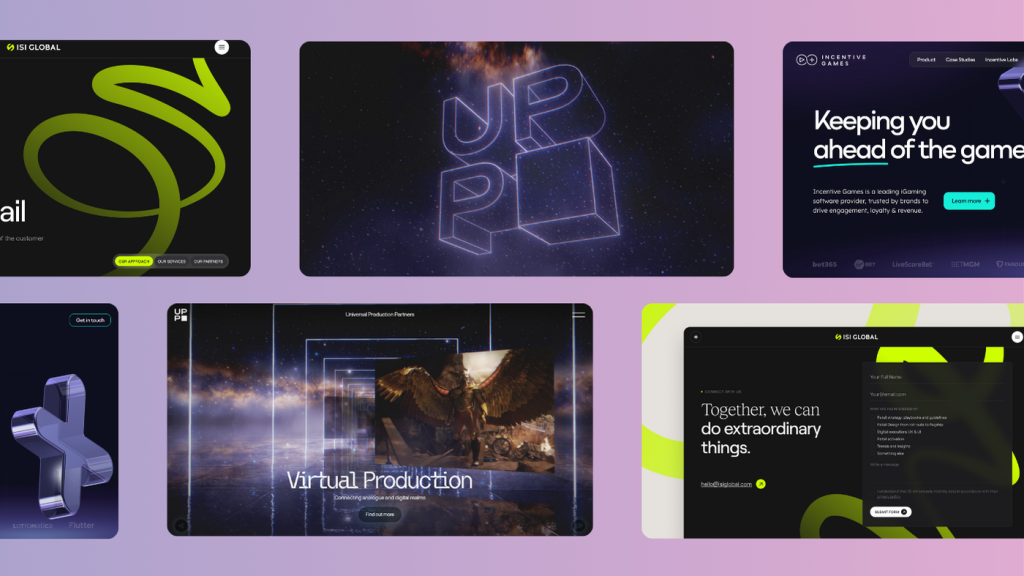How Intentional Design Can Transform User Experience in Minimalist Environments

Understanding the Impact of Intentional Design
The rise of minimalist design has reshaped our digital landscapes, making simplicity a core principle in user experience (UX). As countless brands pivot towards cleaner aesthetics, the role of intentional design gains paramount importance. But what does it mean to implement purposeful choices in such streamlined environments?
Intentional design focuses on creating systems that enhance usability while maintaining a sense of clarity. The effectiveness of these principles is evident in various platforms that have embraced this design philosophy. For instance, Apple’s website famously utilizes a minimalist aesthetic, emphasizing product images and clear typography to direct user attention immediately to their offerings. By keeping unnecessary elements at bay, the site invites users to explore its products without distraction.
Here are key elements that underscore the significance of intentional design:
- User Engagement: Thoughtfully crafted interfaces invite users to interact more meaningfully. For example, the use of visual hierarchy in a landing page can help direct a user’s gaze to vital information first, enhancing engagement and improving decision-making.
- Emotional Impact: Stripped-down visuals create space for deeper connections, fostering loyalty and satisfaction. Brands like Dropbox utilize a minimalist design to convey trust and reliability, effectively aligning their visual strategy with their core message of simplicity and seamless file sharing.
- Accessibility: Clear layouts and navigation paths help diverse user groups access content seamlessly. Websites that prioritize accessibility, like those built on the Web Content Accessibility Guidelines (WCAG), cater to users with varying abilities. Successful applications of a user-centered approach demonstrate best practices for accommodating all individuals, thereby broadening their audience.
Through the lens of minimalism, every design choice is deliberate. The challenge lies not just in aesthetic simplicity but in crafting interactions that do not compromise functionality. Effective minimal designs balance form and function seamlessly. For example, Google’s homepage is a quintessential representation of minimalist principles—its clean look and intuitive search bar prominently highlight the platform’s purpose.
As technology continues to evolve, intentional design strategies can lead to remarkable transformations in how users perceive and interact with digital platforms. This exploration invites readers to delve deeper into the practices and principles that drive successful minimalist design. Companies today clearly recognize the competitive edge that intentional design can afford, making it a priority in their development processes. By focusing on the user experience and fostering genuine connections, brands not only meet consumers’ expectations but also elevate their overall engagement.

DISCOVER MORE: Click here to dive deeper
Key Principles of Intentional Design in Minimalist User Experience
Intentional design serves as a cornerstone in crafting effective and engaging user experiences, particularly in minimalist environments. When referring to minimalism, it’s essential to recognize that it’s not merely about eliminating elements; it’s about strategically reducing clutter while enhancing the overall functionality and emotional connection users have with the platform. The synergy between simplicity and purpose leads to transformative outcomes that can redefine how users navigate digital experiences.
In this context, several key principles underpin the mechanics of intentional design:
- Focus on Clarity: One of the primary ambitions of intentional design is to offer clarity by presenting information in an easily digestible manner. This is achieved through elements such as ample white space and succinct text. For instance, tech giant Microsoft has successfully utilized a minimalist interface in many of its applications, focusing on crisp typography and limited color palettes that guide users clearly to their intended destination.
- Contextual Relevance: Intentional design aims to create a contextual connection with users. Websites like Airbnb use imagery that resonates with their audience’s aspirations, such as breathtaking travel destinations or cozy accommodations. Such contextual relevance informs user interactions with the platform, making navigation feel like a natural extension of their interests.
- Feedback and Interaction: A significant aspect of user experience is providing timely feedback. Intentional designs incorporate immediate response cues, whether through subtle animations or direct messages. For instance, when a user completes an action, a well-placed confirmation pop-up can foster a sense of accomplishment, enhancing user satisfaction and encouraging further engagement.
- Consistency Across Touchpoints: Minimalist environments benefit immensely from ensuring consistency across all user touchpoints. From mobile to desktop versions, providing a coherent design language allows users to feel at home regardless of the device or platform they use. For example, established brands like Spotify apply a consistent minimalist design that allows for seamless transitions between different formats, reinforcing brand identity and easing user navigation.
Adhering to these principles allows design teams not only to craft visually pleasing platforms but also to generate authentic connections and experiences for their users. As brands strive to resonate with their audience amidst an abundance of options, understanding the value of intentional design becomes critical. By employing a design methodology where every element is deliberately curated to enhance usability, brands can elevate user experience dramatically, ultimately translating into increased loyalty and customer satisfaction.
Moreover, as consumer expectations continue to grow, staying ahead means regularly evaluating and iterating design strategies. Continuous engagement with users, understanding their needs and challenges, and implementing feedback into design practices ensures that minimalist experiences remain fresh, relevant, and impactful. This foresight can lead companies to not only meet user expectations but also exceed them, thereby establishing a competitive edge in an ever-evolving digital landscape.
| Category | Details |
|---|---|
| Enhanced Focus | In a minimalist environment, design elements are curated to reduce distractions, allowing users to concentrate on core tasks. |
| Improved Navigation | Intentional design simplifies user pathways, making them more intuitive and reducing cognitive load. |
The relationship between intentional design and user experience in minimalist environments is crucial in establishing an effective interaction framework. By minimizing ornamental elements, designers carve out a clear path for users, allowing for easier navigation and interaction. This approach significantly enhances user engagement, as it removes the overwhelming nature of clutter and focuses attention on what truly matters.Minimalist design emphasizes usability, making essential features abundant while ensuring that superfluous details do not obstruct functionality. For example, a streamlined interface can prompt users to complete tasks swiftly, fostering a sense of accomplishment and satisfaction.Furthermore, utilizing whitespace strategically in design not only elevates visual aesthetics but also aids in delineating sections, making content easily digestible. Such designs cater to users’ evolving preferences for swift user experiences that value efficiency without sacrificing quality. These fundamentals lay the groundwork for brands aiming to enhance interaction and foster deeper connections with their audience. The considerations of intentional design are not just about aesthetics but fundamentally shape how users perceive and interact with digital spaces.
DISCOVER MORE: Click here for space optimization tips
Enhancing User Engagement Through Intentional Design
As brands dive deeper into the world of intentional design, they find not only aesthetic improvements but also profound shifts in user engagement levels. In minimalist environments, where every pixel matters, intentional design acts as a guiding compass for users, promoting exploration while minimizing frustration. This transformation is particularly relevant as industries seek to capture the attention of users who are often overwhelmed by choices.
Personalization Features can play a pivotal role in enhancing user experience. Incorporating user-driven data allows platforms to adapt, ensuring content is aligned with the individual’s preferences. For instance, Netflix employs minimalistic design alongside powerful algorithms to offer personalized recommendations based on viewing habits. This seamless integration not only enhances user satisfaction but also reinforces the platform’s ability to anticipate needs, effectively keeping users engaged for longer periods.
Micro-Interactions represent another powerful avenue for enhancing user experience in minimalist environments. These subtle moments, such as hover effects or small animations, can significantly affect how users interact with a digital product. For instance, when a user adds an item to a shopping cart on an e-commerce site, a gentle animation illustrating the action can add an element of delight, reinforcing the user’s engagement with the platform. Such design elements transcend mere functionality; they create an emotional connection, encouraging users to revisit the platform.
Moreover, embracing adaptive layouts that adjust to various devices enhances the minimalist approach’s effectiveness. With an increasing number of users accessing content through mobile devices, it’s essential for brands to ensure that their designs are responsive and easily navigable. A prime example is the website for the New York Times, which maintains a clean aesthetic across all devices. By focusing on a layout that enhances readability and accessibility regardless of screen size, they create a user experience that feels tailored to individual needs.
Data-driven design also elevates the intentional approach by allowing brands to understand user behavior effectively. Utilizing A/B testing and analytics, companies can discern which elements resonate with users and which deter them. For example, Dropbox employs data-driven design principles to iterate on their user interface continually. By analyzing how users navigate their platform, they refine their minimalistic approach, optimizing the user journey while maintaining clarity and purpose.
Furthermore, embracing the principle of affordance—the visual cues that help users understand how to interact with elements—strengthens usability in minimalistic contexts. For instance, buttons should be easily identifiable and should exhibit characteristics that guide user behavior. By using familiar icons and colors, designers can facilitate intuitive navigation, effectively bridging the gap between users and technological platforms.
As the emphasis on intentional design rapidly reshapes the landscape of digital user experiences, really honing in on these methods allows brands to cultivate environments where users can focus more on their tasks and less on deciphering cluttered interfaces. The result is a cohesive user experience that not only captures attention but retains it, forging lasting connections between users and the brands they engage with. By making intentional choices that prioritize usability and emotional resonance, businesses can leverage their minimalist design to create an impactful user experience that stands out in today’s crowded digital marketplace.
DISCOVER MORE: Click here to unlock innovative decluttering techniques
Conclusion: The Future of User Experience in Minimalist Design
In an era where digital experiences can dictate brand success, the role of intentional design in shaping user interactions cannot be overstated. As we’ve explored, this approach goes beyond mere aesthetics; it encapsulates a philosophy that prioritizes clarity, usability, and emotional connection. Brands that embrace this methodology not only enhance user satisfaction but also cultivate loyalty in an increasingly competitive landscape.
Through strategies such as personalization, micro-interactions, and data-driven design, companies can create environments that resonate on a personal level with users. These elements help reduce cognitive load and enrich the user experience, which is particularly important in minimalist settings where space and functional simplicity reign supreme. The adaptive layouts employed by platforms like the New York Times serve as a reminder of how essential it is to cater to diverse devices while maintaining a clean design aesthetic.
Moreover, the principles of affordance further deepen usability, allowing users to intuitively navigate through digital landscapes without unnecessary friction. By incorporating familiar visual cues, designers can effectively bridge the gap between complex technology and user-friendly interfaces.
As businesses continue to recognize the transformative power of intentional design, they will not only meet but exceed user expectations. This shift towards a more thoughtful and strategic approach to design will pave the way for future innovations that redefine what minimalism can achieve. In conclusion, as we look forward to a landscape of increasingly tailored user experiences, the potential for intentional design to enhance engagement in minimalist environments remains limitless.


